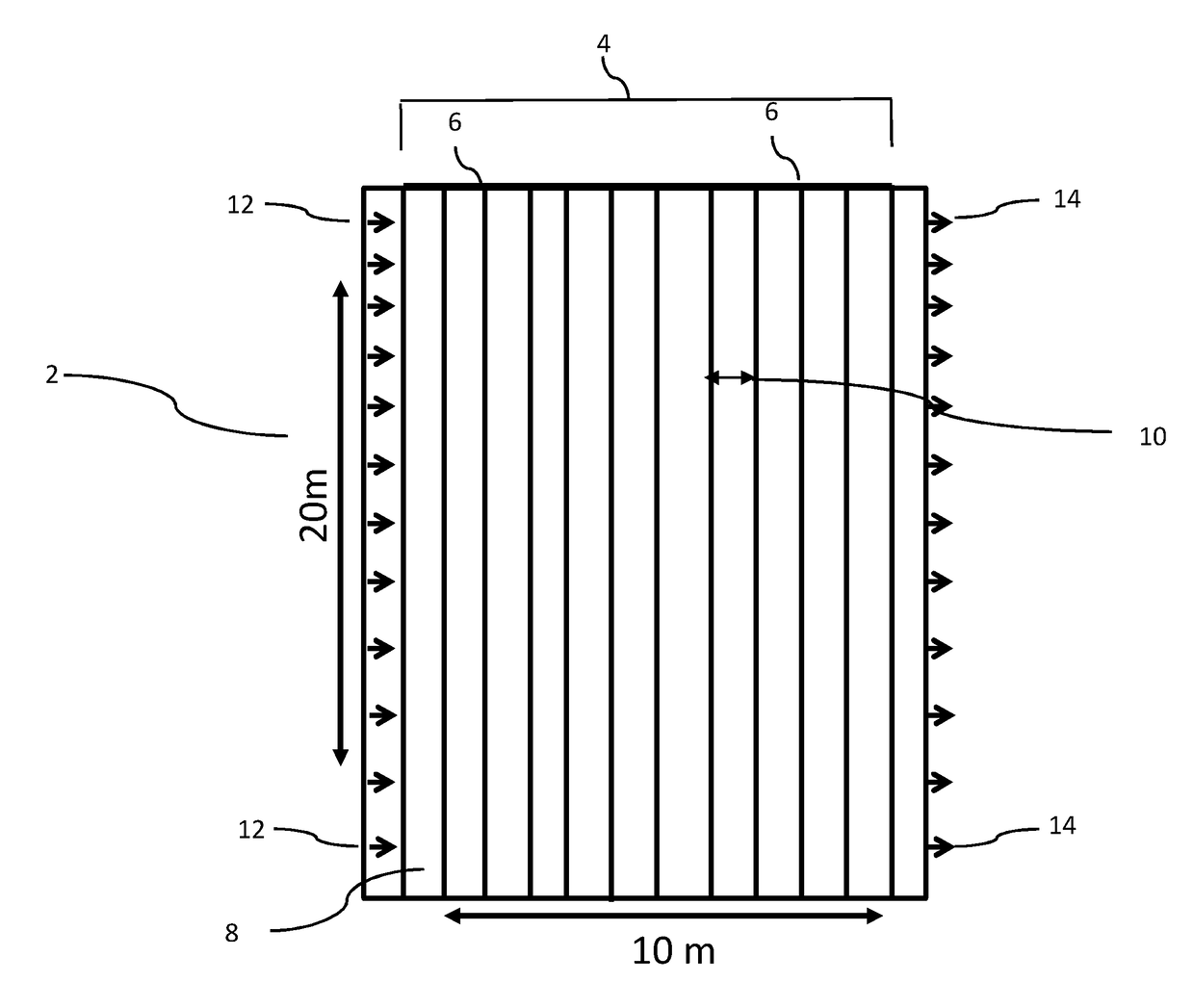Macroalgae biomass production
a technology of biomass production and macroalgae, which is applied in the direction of nitrogenous fertilisers, horticulture tools/apparatus, horticulture, etc., can solve the problems of limited use, lack of efficient production systems, and limited use of macroalgae as food, so as to achieve high yield and high quality, use and quality
- Summary
- Abstract
- Description
- Claims
- Application Information
AI Technical Summary
Benefits of technology
Problems solved by technology
Method used
Image
Examples
example 1
Production of Ulva Batch GH 6 / 7
[0107]Growth was started in a small inoculum tank of 0.5 m3. 150 gr of the algae at an average size of 2-15 cm2 were inoculated in the small tank and left to grow for 13 days. Manual fragmentation of the growing algae to keep the size at 2-15 cm2 was made as necessary, typically once a day. Average growth rate was 510 gr / m2 / day. The algae reached weight of 2.15 Kg. 700 gr of this mass were transferred to a larger inoculum tank (1.5-2 m3) and growth continued for additional 10 days. The measured growth rate was 440 gr / m2 / day and total algal weight of 4.24 Kg was produced. On the 11th day, all the algal mass was transferred to a first cultivation pond of 6 m2. Algae were grown in this cultivation pond for 13 days at an average growth rate of 200 gr / m2 / day. After total of 36 days of growth the complete algal mass (20 Kg) was transferred to a second cultivation pond of 18 m2. After additional 18 days of growth at an average growth rate of 120 gr / m2 / day alg...
example 2
Production of Ulva Batch GH 3 / 4
[0108]Growth was started in a small inoculum tank of 0.5 m3. 150 gr of Ulva (batch GH 3 / 4) at an average size of 2-15 cm2 were inoculated in the small tank and left to grow for 15 days. Fragmentation of the growing algae to keep the size at 2-15 cm2 was made manually as necessary, typically once a day. Average growth rate was 180 gr / m2 / day. On day 16 the algae reached the weight of 950 gr. 150 gr of this mass were transferred to a larger inoculum tank and growth continued for additional 20 days. The measured growth rate was 180 gr / m2 / day and total algal weight of 4.63 Kg was produced. On the 21st day, all the algal mass was transferred to a first cultivation pond of 6 m2. The algae were grown in the first cultivation pond for 18 days at an average growth rate of 110 gr / m2 / day. The complete algal mass obtained (17 Kg) was transferred to a second cultivation pond of 18 m2. After additional 21 days of growth at an average growth rate of 80 gr / m2 / day algae...
PUM
 Login to View More
Login to View More Abstract
Description
Claims
Application Information
 Login to View More
Login to View More - R&D
- Intellectual Property
- Life Sciences
- Materials
- Tech Scout
- Unparalleled Data Quality
- Higher Quality Content
- 60% Fewer Hallucinations
Browse by: Latest US Patents, China's latest patents, Technical Efficacy Thesaurus, Application Domain, Technology Topic, Popular Technical Reports.
© 2025 PatSnap. All rights reserved.Legal|Privacy policy|Modern Slavery Act Transparency Statement|Sitemap|About US| Contact US: help@patsnap.com



